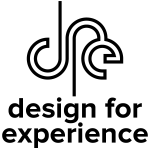In his article, “The Internet of Things and the Mythical Smart Fridge,” Avi Itzkovitch descibes a future landscape of consumer products, where individual items are able to communicate detailed information to the Internet of Things using radio frequency identification (RFID) tags.
Itzkovitch imagines a smart fridge that will be able to read RFID tags on all of the products in the fridge and know how long they’ve been sitting there and when they need to be thrown out. “Using the smart fridge should be effortless,” he writes. Clearly an effortless fridge is one that puts its user at the center.
User-centered research and design practices can go into consumer products of every size and scope, and increasingly, consumer products are being designed with user needs and usability in mind. They can be small, like a stylish iPhone stand that keeps your cable coiled out of sight. They can be pragmatic and life-saving like a smoke alarm from Nest that speaks to you when there’s danger in the air. They can also be sporty electric cars from Tesla with a 17″ touch user interfaace that evolves over time.
Ad by iStock [google_ad:WITHINARTICLE_1_468X60]
Products like these are indicative of the growing awareness and interest in the practices of user-centered design. The DfE Consumer Product award recognizes consumer products that create or enable excellent experiences for their users.
If you have favorite products that put you, as the user, at the heart of their design, nominate them. If you think your product has the right stuff, apply for this award right now!
Image of radio dials courtesy Shutterstock








